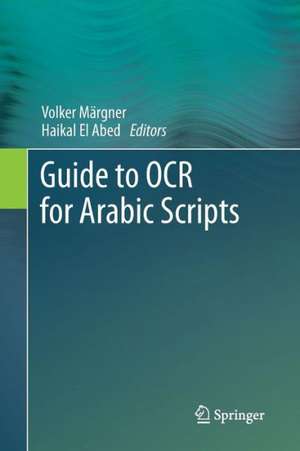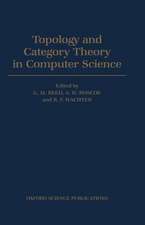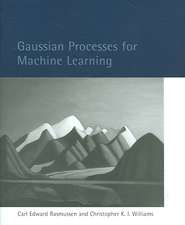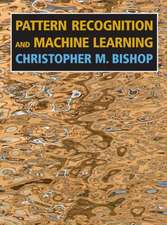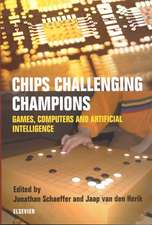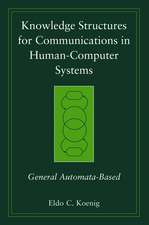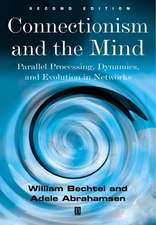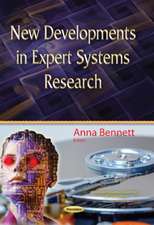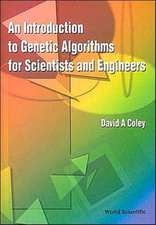Guide to OCR for Arabic Scripts
Editat de Volker Märgner, Haikal El Abeden Limba Engleză Paperback – 9 aug 2014
| Toate formatele și edițiile | Preț | Express |
|---|---|---|
| Paperback (1) | 660.99 lei 6-8 săpt. | |
| SPRINGER LONDON – 9 aug 2014 | 660.99 lei 6-8 săpt. | |
| Hardback (1) | 669.06 lei 6-8 săpt. | |
| SPRINGER LONDON – 4 iul 2012 | 669.06 lei 6-8 săpt. |
Preț: 660.99 lei
Preț vechi: 826.23 lei
-20% Nou
Puncte Express: 991
Preț estimativ în valută:
126.49€ • 137.36$ • 106.26£
126.49€ • 137.36$ • 106.26£
Carte tipărită la comandă
Livrare economică 22 aprilie-06 mai
Preluare comenzi: 021 569.72.76
Specificații
ISBN-13: 9781447159766
ISBN-10: 1447159764
Pagini: 612
Ilustrații: XX, 592 p.
Dimensiuni: 155 x 235 x 32 mm
Greutate: 0.84 kg
Ediția:2012
Editura: SPRINGER LONDON
Colecția Springer
Locul publicării:London, United Kingdom
ISBN-10: 1447159764
Pagini: 612
Ilustrații: XX, 592 p.
Dimensiuni: 155 x 235 x 32 mm
Greutate: 0.84 kg
Ediția:2012
Editura: SPRINGER LONDON
Colecția Springer
Locul publicării:London, United Kingdom
Public țintă
ResearchCuprins
Part I: Pre-Processing.- An Assessment of Arabic Handwriting Recognition Technology.- Layout Analysis of Arabic Script Documents.- A Multi-Stage Approach to Arabic Document Analysis.- Pre-Processing Issues in Arabic OCR.- Segmentation of Ancient Arabic Documents.- Features for HMM-Based Arabic Handwritten Word Recognition Systems.- Part II: Recognition.- Printed Arabic Text Recognition.- Handwritten Arabic Word Recognition Using the IFN/ENIT-Database.- RWTH OCR: A Large Vocabulary Optical Character Recognition System for Arabic Scripts.- Arabic Handwriting Recognition using Bernoulli HMMs.- Handwritten Farsi Words Recognition Using Hidden Markov Models.- Offline Arabic Handwriting Recognition with Multidimensional Recurrent Neural Networks.- Application of Fractal Theory in Farsi/Arabic Document Analysis.- Multi-Stream Markov Models for Arabic Handwriting Recognition.- Towards Distributed Cursive Writing OCR Systems based on the Combination of Complementary Approaches.- Part III: Evaluation.- Data Collection and Annotation for Arabic Document Analysis.- Arabic Handwriting Recognition Competitions.- Benchmarking Strategy for Arabic Screen Rendered Word Recognition.- Part IV: Applications.- A Robust Word Spotting System for Historical Arabic Manuscripts.- Arabic Text recognition using a Script-Independent Methodology: A Unified HMM-based Approach for Machine-print and Handwritten Text.- Arabic Handwriting Recognition Using VDHMM and Over-Segmentation.- Online Arabic Databases and Applications.- Online Arabic Handwritten Words Recognition Based on HMM and Combination of Online and Offline Features.- Part I: Pre-Processing.- An Assessment of Arabic Handwriting Recognition Technology.- Layout Analysis of Arabic Script Documents.- A Multi-Stage Approach to Arabic Document Analysis.- Pre-Processing Issues in Arabic OCR.- Segmentation of Ancient Arabic Documents.- Features for HMM-Based Arabic Handwritten Word Recognition Systems.- Part II: Recognition.- Printed Arabic Text Recognition.- Handwritten Arabic Word Recognition Using the IFN/ENIT-Database.- RWTH OCR: A Large Vocabulary Optical Character Recognition System for Arabic Scripts.- Arabic Handwriting Recognition using Bernoulli HMMs.- Handwritten Farsi Words Recognition Using Hidden Markov Models.- Offline Arabic Handwriting Recognition with Multidimensional Recurrent Neural Networks.- Application of Fractal Theory in Farsi/Arabic Document Analysis.- Multi-Stream Markov Models for Arabic Handwriting Recognition.- Towards Distributed Cursive Writing OCR Systems based on the Combination of Complementary Approaches.- Part III: Evaluation.- Data Collection and Annotation for Arabic Document Analysis.- Arabic Handwriting Recognition Competitions.- Benchmarking Strategy for Arabic Screen Rendered Word Recognition.- Part IV: Applications.- A Robust Word Spotting System for Historical Arabic Manuscripts.- Arabic Text recognition using a Script-Independent Methodology: A Unified HMM-based Approach for Machine-print and Handwritten Text.- Arabic Handwriting Recognition Using VDHMM and Over-Segmentation.- Online Arabic Databases and Applications.- Online Arabic Handwritten Words Recognition Based on HMM and Combination of Online and Offline Features.
Notă biografică
Volker Märgner is Academic Director of the Institute for Communications Technology (IfN) at Technische Universität Braunschweig, Germany. He has over 30 years research experience in image processing, pattern recognition, and handwriting recognition. He developed the IfN/ENIT-database of Arabic handwritten names which is the reference for Arabic handwritten word recognition systems and organized competitions both together with Haikal El Abed.
Haikal El Abed is a Senior Research Engineer at the Institute for Communications Technology (IfN) at Technische Universität Braunschweig, Germany. He has more than 10 years research experience in pattern recognition and Arabic text recognition, on-line and off-line. He organizes competitions and works on the collection of databases.
Haikal El Abed is a Senior Research Engineer at the Institute for Communications Technology (IfN) at Technische Universität Braunschweig, Germany. He has more than 10 years research experience in pattern recognition and Arabic text recognition, on-line and off-line. He organizes competitions and works on the collection of databases.
Textul de pe ultima copertă
Optical Character Recognition (OCR) is a key technology enabling access to digital text data. This technique is especially valuable for Arabic scripts, for which there has been very little digital access.
Arabic script is widely used today. It is estimated that approximately 200 million people use Arabic as a first language, and the Arabic script is shared by an additional 13 languages, making it the second most widespread script in the world. However, Arabic scripts pose unique challenges for OCR systems that cannot be simply adapted from existing Latin character-based processing techniques.
This comprehensive Guide to OCR for Arabic Scripts is the first book of its kind, specifically devoted to this emerging field. Presenting state-of-the-art research from an international selection of pre-eminent authorities, the book reviews techniques and algorithms for the recognition of both handwritten and printed Arabic scripts. Many of these techniques can also be applied to other scripts, serving as an inspiration to all groups working in the area of OCR.
Topics and features:
Arabic script is widely used today. It is estimated that approximately 200 million people use Arabic as a first language, and the Arabic script is shared by an additional 13 languages, making it the second most widespread script in the world. However, Arabic scripts pose unique challenges for OCR systems that cannot be simply adapted from existing Latin character-based processing techniques.
This comprehensive Guide to OCR for Arabic Scripts is the first book of its kind, specifically devoted to this emerging field. Presenting state-of-the-art research from an international selection of pre-eminent authorities, the book reviews techniques and algorithms for the recognition of both handwritten and printed Arabic scripts. Many of these techniques can also be applied to other scripts, serving as an inspiration to all groups working in the area of OCR.
Topics and features:
- Contains contributions from the leading researchers in the field
- With a Foreword by Professor Bente Maegaard of the University of Copenhagen
- Presents a detailed overview of Arabic character recognition technology, covering a range of different aspects of pre-processing and feature extraction
- Reviews a broad selection of varying approaches, including HMM-based methods and a recognition system based on multidimensional recurrent neural networks
- Examines the evaluation of Arabic script recognition systems, discussing data collection and annotation, benchmarking strategies, and handwriting recognition competitions
- Describes numerous applications of Arabic script recognition technology, from historical Arabic manuscripts to online Arabic recognition
Caracteristici
The first book of its kind, specifically devoted to the emerging field of OCR for Arabic Scripts Presents state-of-the-art research from an international selection of pre-eminent authorities in the field Describes numerous applications of Arabic script recognition technology, from historical Arabic manuscripts to online Arabic recognition Includes supplementary material: sn.pub/extras
